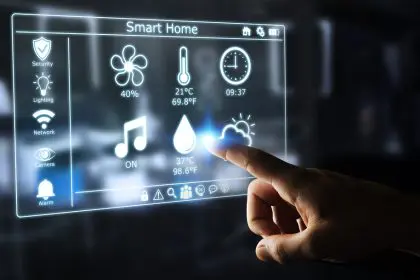The simplest form of exercise might be the most powerful tool for longevity we’ve been overlooking, walking. Recent scientific analysis involving over 30 million participants has revealed that modest amounts of walking can dramatically improve health outcomes, challenging conventional wisdom about the intensity needed for meaningful exercise benefits.
A groundbreaking study reshapes exercise recommendations
An extensive meta-analysis examining data from 196 peer-reviewed studies has produced compelling evidence about walking’s impact on longevity. The findings reveal that just 75 minutes of moderate-intensity walking per week – roughly 11 minutes daily – reduces early mortality risk by 23%, demonstrating that small amounts of movement can yield outsized health returns.
The science behind the effectiveness
When we walk, multiple biological systems engage simultaneously. This seemingly simple activity triggers a cascade of health-promoting responses:
- Enhanced cardiovascular function
- Improved metabolic efficiency
- Strengthened musculoskeletal system
- Activated immune response
- Reduced inflammatory markers
- Balanced hormone production
Critical health risks significantly decrease
The research demonstrates substantial risk reductions across major health concerns:
- Cardiovascular disease risk drops 17%
- Cancer risk decreases 7%
- Type 2 diabetes risk diminishes
- Bone density loss slows
- Joint deterioration reduces
- Depression risk lessens
- Anxiety symptoms improve
- Cognitive decline slows
The accessibility advantage
Unlike complex exercise routines, it requires minimal equipment and no specialized training. This accessibility makes it particularly valuable for:
- Seniors beginning exercise programs
- Individuals recovering from illness
- People with limited mobility
- Those with tight schedules
- Anyone new to fitness
- Budget-conscious exercisers
Optimal patterns for maximum benefit
While any amount of walking provides benefits, certain patterns maximize health outcomes:
- Frequency: Aim for daily movement
- Intensity: Maintain a brisk but comfortable pace
- Duration: Start with 11 minutes, gradually increase
- Timing: Morning walks may enhance metabolic benefits
- Surface: Varied terrain engages more muscle groups
- Posture: Upright stance with relaxed shoulders
- Arm movement: Natural swing enhances calorie burn
Building sustainable habits
Creating lasting walking habits requires strategic implementation:
- Start small with achievable goals
- Track progress using simple metrics
- Establish consistency
- Identify multiple routes
- Prepare for weather variations
- Plan both indoor and outdoor options
- Set progressive distance targets
Maximizing walking’s mental benefits
Beyond physical health, it provides substantial psychological advantages:
- Reduces stress hormones
- Improves sleep quality
- Enhances creative thinking
- Strengthens memory formation
- Boosts problem-solving ability
- Increases mindfulness
- Promotes social connection
Practical integration strategies
Incorporating more of this exercise into daily routines can be accomplished through simple adjustments:
- Morning routine modifications
- Wake 15 minutes earlier
- Walk during coffee brewing
- Include pets in morning walks
- Combine with news listening
- Workday opportunities
- Walking meetings
- Lunch break strolls
- Standing desk breaks
- Parking farther away
- Evening options
- Post-dinner walks
- TV commercial movement
- Evening errands on foot
- Sunset rituals
Essential safety considerations
Maintaining safety while walking requires attention to:
- Environmental awareness
- Weather conditions
- Surface stability
- Lighting adequacy
- Traffic patterns
- Personal preparation
- Appropriate footwear
- Visible clothing
- Weather protection
- Hydration needs
Technology’s role in walking success
Modern technology can enhance programs through:
- Step-tracking devices
- Route-planning apps
- Social walking platforms
- Progress monitoring tools
- Virtual walking challenges
- Weather alert systems
Special considerations for different populations
Programs should adapt to individual needs:
- Seniors
- Balance assessment
- Joint-friendly surfaces
- Regular rest stops
- Social support systems
- Office workers
- Schedule integration
- Workplace routes
- Standing desk transitions
- Movement reminders
- Parents
- Stroller considerations
- Child-friendly paths
- Family games
- Educational integration
Future directions in research
Ongoing studies continue to explore benefits:
- Genetic expression changes
- Brain structure modifications
- Cellular aging impacts
- Microbiome interactions
- Chronobiology effects
The evidence supporting its health benefits continues to grow, suggesting that this simple activity might be one of the most powerful tools for improving public health. By understanding and implementing strategic programs, individuals can access these benefits with minimal barriers to entry. The key lies not in dramatic lifestyle overhauls but in consistent, manageable movement integrated naturally into daily life. As research evolves, walking’s role in preventive health care will likely become even more prominent, offering a practical solution to many modern health challenges.














